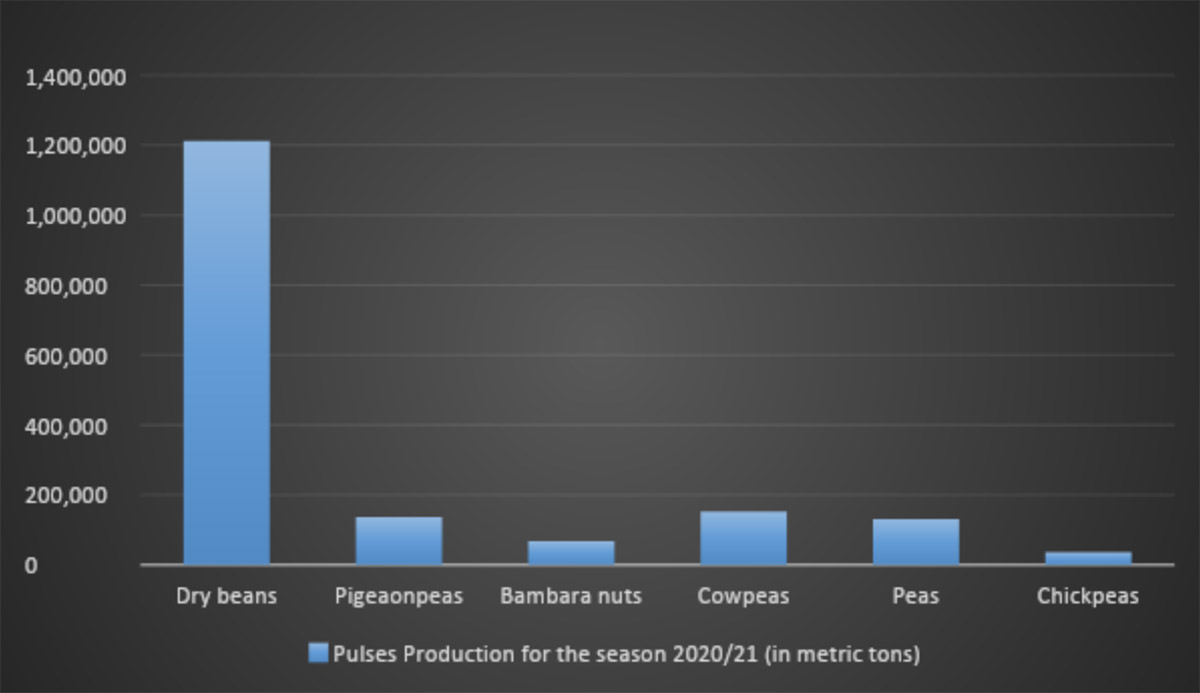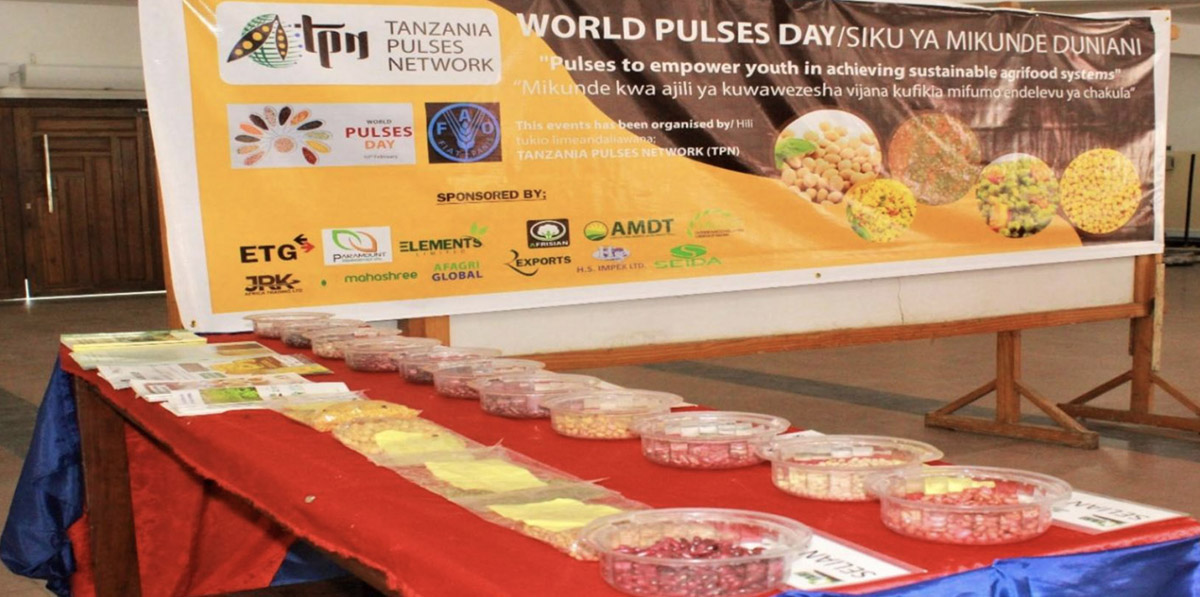March 4, 2022
When the World Health Organisation (WHO) declared COVID-19 a pandemic and almost the entire world moved into lockdowns, Tanzania went against the grain with the government deciding to try a relaxed method of containing the virus by leaving the economy largely open.

The East African nation of Tanzania covers a vast area of 945,000 square kilometres, yet only a quarter of its arable land is under cultivation.
When the World Health Organisation (WHO) declared COVID-19 a pandemic and almost the entire world moved into lockdowns, Tanzania went against the grain with the government deciding to try a relaxed method of containing the virus by leaving the economy largely open. This move sparked the interest of the British newspaper The Telegraph, which ran a piece nicknaming Tanzania “The Sweden of Africa”, after the European country that also decided to stay open in spite of the pandemic.
Critics who believed the approach would leave Tanzania in an apocalyptic state are now amazed to discover that the nation has the lowest number of cases in East Africa and is one of the least affected countries both in Africa and the world. This move also meant that all pulse production activities could go on as normal, with logistics operating and people allowed to move freely within the country’s borders without the obstruction of a plethora of destabilizing restrictions.
Retrospectively, in 2020/21, the Government of India ranked Tanzania as their leading pulse exporter in Africa, ranking only behind Myanmar and Canada at the global level. In the same year, Tanzania exported a volume of pulses valued at US $193.1 million, according to the Trademap of the International Trade Centre (ITC).
Reports on pulse exports from the Custom Office of the Tanzania Revenue Authority (TRA), which were obtained by the Tanzania Pulses Network (TPN), shows that in the calendar year 2021, Tanzania exported a total of 460,697 tons of pulses, up from 300,000 tons in the previous year.
In December 2021, Tanzania’s Ministry of Agriculture released the Preliminary Food Production Report for the 2020/21 season, which showed that total pulse production was 2.1 million tons, a 14% increase over a two year period.

Source: Ministry of Agriculture, 2021
Pulse production in Africa is showing rapid improvement and the sector is on track for a very promising future. Africa produced 5.16 million tons of pulses in 1971 while, in 2020, this figure rose to 21.2 million tons, with Nigeria, Ethiopia, Niger, Tanzania, Kenya, Malawi, Burkina Faso, Mozambique and Uganda the top 10 producing countries.
With the recent sanctions imposed on Russia following the Ukrainian invasion, the world’s pulses supply is expected to shrink and prices to inflate as a result. In 2020, Russia exported 1.08 million tons of pulses, of which nearly 30% went to Pakistan, 15.7% to Turkey and 8.9% to India. It is too early to predict the full magnitude of the impeded Russian supply but the impact of these sanctions will surely be felt in the pulses industry.
What we can be sure of, however, is that Africa now has an opportunity to take up a more important role in the sector; as two net exporters of pulses, Russia and Ukraine, have stepped out of the market, demand must naturally shift south of the equator.
To date, Tanzania does not enjoy any preferential treatment with India regarding access to the Indian pulses market, unlike Mozambique, which has had an MoU with the country since 2016 and Malawi, with whom an MoU was established in 2021.
Reports from the government say that, in December 2021, a delegate from the Indian government came to negotiate with their counterpart in Dodoma on an MoU, specifically regarding pigeon peas. Tanzania is said to have proposed a quota of 150,000 tons per year. This, however, has left Tanzanian exporters dissatisfied as some other restricted crops, such as green grams and chickpeas are set to face stiff competition from Australia, another major producer that is reported to have inked a similar deal with India on chickpeas. Nonetheless, others are more optimistic about the beginning of negotiations and the promise that other pulses may be added later.
In August 2021, the TPN met with the Minister for Industries and Trade, Prof. Kitila Mkumbo with the purpose of reminding the government of the importance of establishing an MoU with the world’s biggest consumer of pulses. The request was heartily received by the Minister, who immediately promised to contact his Indian counterpart and resume talks and the December 2021 delegation from India was indubitably a result of that engagement.
The day that a bilateral trade deal between Tanzania and India is signed will represent a primordial step in the relationship between these two countries and the positive effects of such a deal will spill into other sectors as well. Almost every Tanzanian remembers the unfortunate scenario in 2017 when India imposed a unilateral quantitative restriction of pigeon peas and green gram from Tanzania, among several other nations.
Last year, I wrote a chapter entitled, “The Ban on Pigeon Peas from Tanzania and its Impacts” in a co-authored book, “India–Africa Partnership for Food Security and Capacity Building: South-South Cooperation”, published by Palgrave Macmillan in 2021. In it, I attempted to highlight that if this matter could not be dealt with amicably, trade between the two countries would be in grave peril even in spite of a decades-long bilateral trade relationship. The recent trend, however, promises a brighter future for bilateral trade between these two important nations.

For the first time in history, Tanzania commemorated World Pulses Day on February 10, 2022. To commemorate this day, the TPN held an event at J.K Chande Hall at Shaaban Robert Secondary School in Dar Es Salaam. The event was aimed at raising awareness about the nutritional and environmental benefits of pulses and the economic opportunities the sector can make available to the youth. The attendees also had the opportunity to get to know the different varieties of pulses that can be grown in Tanzania and taste different recipes, as well as learn about the myriad benefits of pulses.
The cook present at the event, Mrs. Elizabeth Ikamba, had no experience with cooking with pulses and so the TPN, in collaboration with other actors in the value chain, brought in experts from the Tanzania Agriculture Research Institute (TARI) Sellian Centre in Arusha to share their knowledge. Mrs. Ikamba then prepared a porridge and some buns out of dry bean flour, samosas made of green gram and bhajia made of chickpeas, among other delicious dishes.
This important event was attended by the Food and Agriculture Organisation (FAO) in Tanzania and resulted in requests from stakeholders that the TPN go and train their cooks on how to prepare different recipes of pulses.

Tanzania / WHO / COVID-19 / East Africa / India / Myanmar / Canada / Tanzania Pulses Network / Nigeria / Ethiopia / Niger / Tanzania / Kenya / Malawi / Burkina Faso / Mozambique / Uganda / Russia / Pakistan / India / Turkey / Mozambique / pigeon peas / green grams / chickpeas / Australia / World Pulses Day / FAO
Disclaimer: The opinions or views expressed in this publication are those of the authors or quoted persons. They do not purport to reflect the opinions or views of the Global Pulse Confederation or its members.